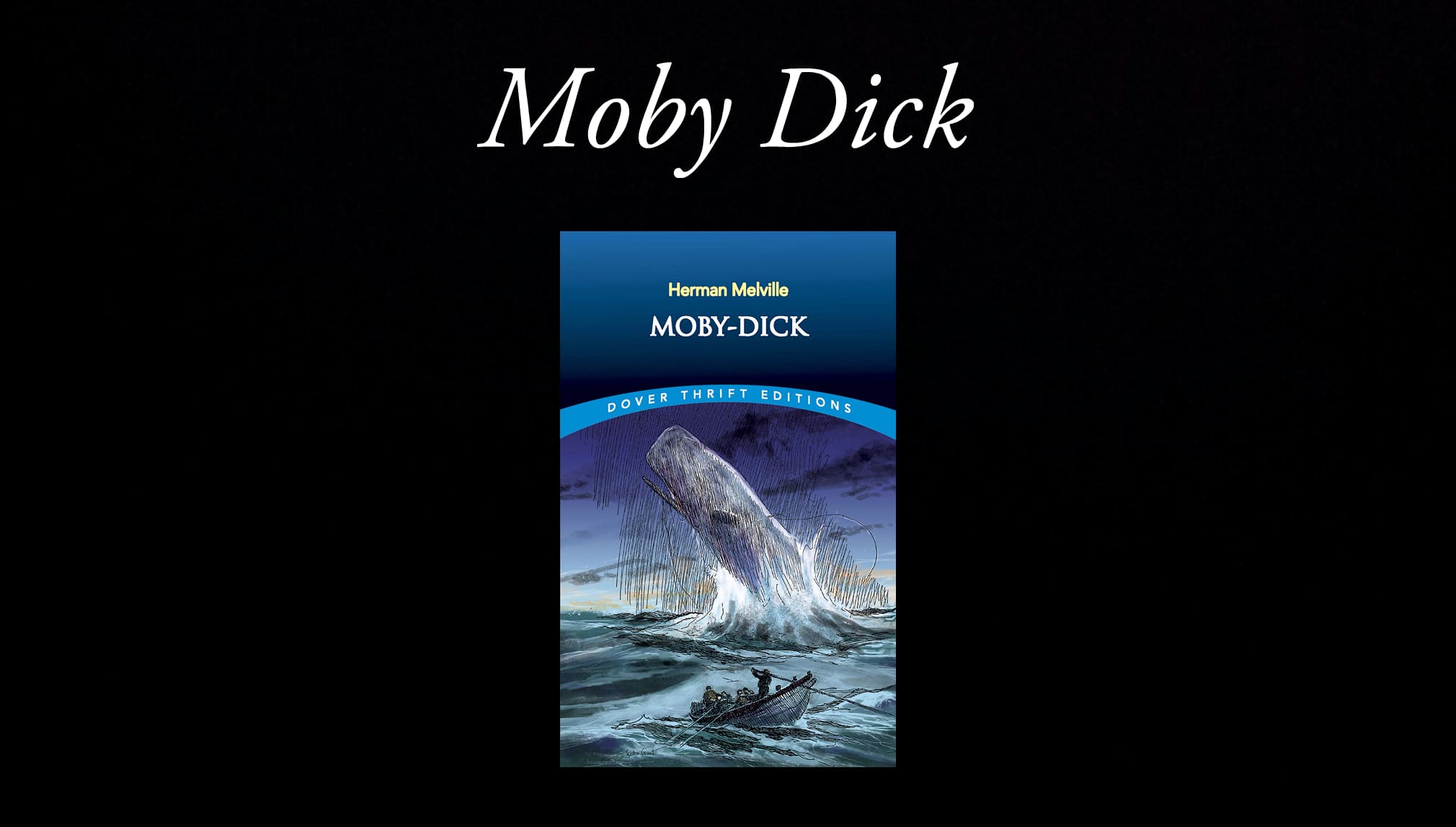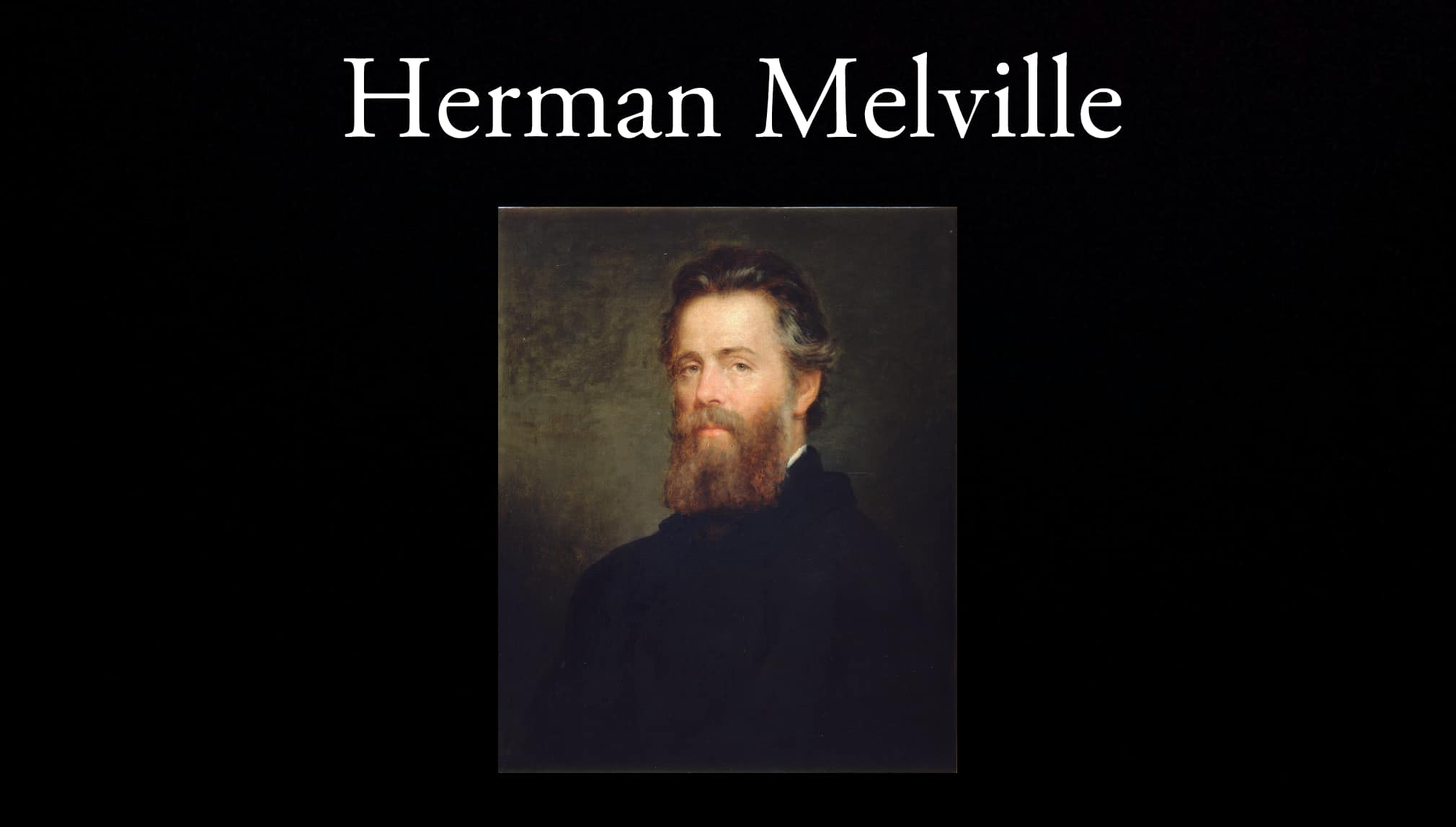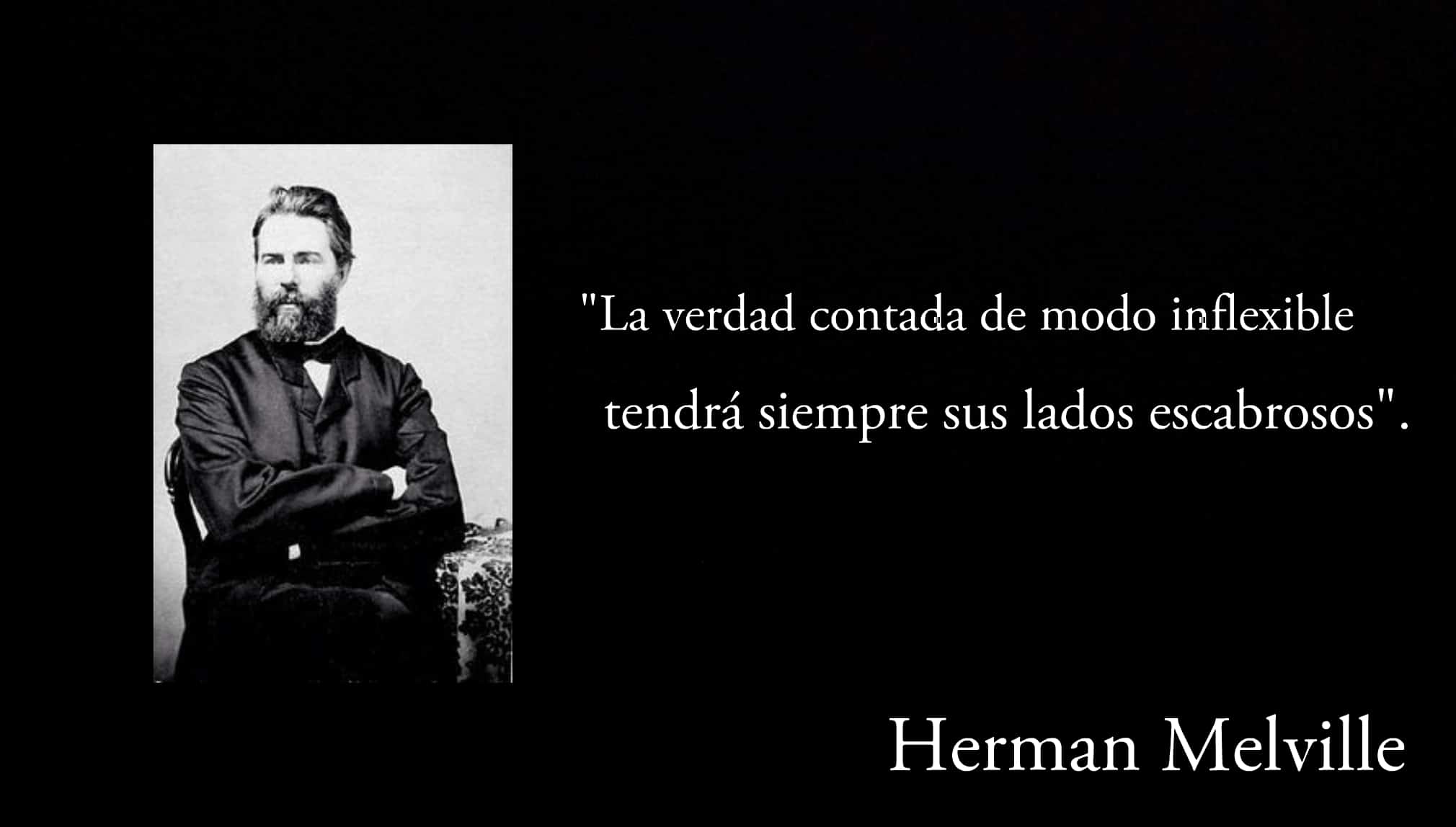
Moby Dick.
Moby Dick, Herman Melville, is the story of a man obsessed with hunting a dangerous and mysterious white sperm whale. The man in question, Captain Ahab, wants revenge on the cetacean because it ripped off his leg during a chase years ago. He is in command of the whaling ship The Pequod and its seamanship.
The book is narrated by Ismael, a young sailor. The other members of the crew are Starbuck, Stubb and Flash (first, second and third commanding officer, respectively); the harpooners, Queequeg, Tashtego and Dagoo. They all agree to embark on a supposed business adventure. But when events get complicated, Ahab makes the mission's goal clear: his revenge.
Author Bio, Herman Melville
Birth, family and childhood
Herman Melville was born in New York, USA, on August 1, 1819, into a family descended from the Scottish aristocracy. He was the second child between Allan and Maria Ganservoort Melvill (the second "e" in the surname was added after the father's death in 1832). Herman grew up in the shadow of his older brother, in fact, at the age of seven his mother considered him "very clumsy to speak and slow to understand."
The Melvills wanted a world-class education for their children because of the prominence of the family. Maria's father was considered the richest man in Albany, New York, as well as a hero of the Revolutionary War. On the other hand, Allan Melvill was a member of the Boston Tea Party, always striving to maintain the appearance and status of the family.
Youth and training
Family businesses became so complicated that Allan Melvill died in January 1832, overwhelmed by worries and heavy debts. Maria was widowed with four sons and four daughters. Consequently, the two oldest sons had to work. The teenage Herman worked as a bank receptionist until 1935 and then in the family store while attending Albany Classical School.
His first experiences at sea
In 1837 he made his first transoceanic crossing to Liverpool. After a year, he returned to the United States to work as a teacher. In 1941 he embarked for a year and a half on a whaler across the South Seas. The adventure culminated with a month among cannibals in the Marquesas Islands. He was able to escape aboard an Australian merchant ship, but had to remain in prison for several weeks after disembarking in Tahiti.
In 1943, Herman Melville enlisted in Honolulu (Hawaii) as part of the crew of a US Navy frigate. Such a wealth of experiences as a sailor and soldier inspired him to write and publish his first novels. In this way, they were appearing type (1846) omoo (1847) Tuesday (1849) redburn (1849) and The white war (1850)
The editorial paradox of Moby Dick
In the early 1850s he settled in a Massachusetts country farmhouse. There he forged a close friendship with the author Nathaniel Hawthorne, to whom he dedicated his masterpiece: Moby Dick (1851). However, the white whale book did not garner many sales. Actually, the appraisal of Melville's work came after his death. What's more, his next post, Pierre (1852), was a resounding failure.
Some years later, Herman Melville released a compilation book of his best stories in Tales from Piazza (1856) which includes brief reviews about the Galapagos Islands. Unfortunately, the sales of his books did not represent an income that allowed him to sustain himself exclusively from writing. Therefore, he worked as a customs inspector in New York between 1866 and 1885.
His latest posts
Despite his port occupations, Herman Melville was able to post Aspects of the war (1866) and Clarel (1876) His latest novel, Billy Budd, sailor (1924), completed it months before his death, which occurred in New York on September 28, 1891. Today, Melville is widely recognized as one of the greatest American novelists of all time.
Analysis of Moby Dick
Mentality of the time
The portal PSHschool.com (July 2015) notes: "In Melville's time, the captain of a ship had unlimited authority." Everyone on board knew this and in case of disagreement they avoided any direct confrontation with the captain. Otherwise, the disregard of their orders resulted in arbitrary humiliation and / or very severe punishments.

Hermann Melville.
Under these iron lines of command the interactions of the characters of Moby Dick. In this sense, Veronica Faller expresses in her essay (2013) for the seminar "The Whale" the values of "manliness and friendship" palpable in the work. Likewise, Faller perceives that “the absence of women in Moby Dick”Derives from two specific reasons:“ the need for acceptance and the need for domination ”.
symbology
Doctors, Meenakshi Sharma Yadav (King Khalid University) and Manoj Kumar Yadav (independent), very aptly describe the symbols in the work. In his post for the International Journal of Linguistics, Literature and Translation (2019), the researchers explain that the white color reflects purity and angelic goodness.
But the white can also become the personification of racism, prejudice, severity and any fair representation of the laws of nature. In the end, the white sperm whale does not prevail because it is an embodiment of God's wrath. No, Moby Dick wins due to his adaptive advantage over other land creatures (men) who pretend to challenge him at sea.
Synthesis of Moby Dick
Home
The events are narrated by the sailor Ismael in the first person, who is describing his stay on the island of Nantucked, on the east coast of the United States. At the beginning it expresses its attraction irremediable towards the sea while introducing two of the book's protagonists: the harpooners Queequeg and Mapple. With the former he forges a very close friendship and embarks on the pequod, a small whaler with an elusive and reserved captain.
Once sailed, Ismael and Queequeg meet the rest of the crew: Petty Officer Starbuck, Second Sailor Stubb, and Third Officer Flash. Additionally, the pequod It has two harpooners: Tashtego (of the North American Aquinnah Wampanoag ethnic group) and Dagoo “the African”. The seemingly menacing and uneasy Captain Ahab is only seen after several days at sea.

Herman Melville quote.
The majestic goal
Ahab pursues his mysterious target with such passion — or rather, obsession — that he ends up infecting the entire crew. It is about the famous Moby Dick, once sighted by Queequeg and by the other harpooners. At this point, Ahab confesses to his men the exclusive and true mission of the expedition: to kill the white sperm whale.
Only Starbuck remains cautious because he knows the captain's background motive (avenging the lost left leg) and fears for the integrity of his teammates. To disguise his motives, Ahab orders the crew to report any sperm whale sightings. The most intriguing thing about the situation is the discovery of a hidden crew that had been making the journey with the others led by the Persian Fedallah.
Obsession and bad omen
Ahab surprises the entire crew of the pequod when he himself boards one of the harpoon boats in the heat of whaling slaughter fever. Later, the expedition is achieved with another boat, the Albatross, but the information provided by them about the white whale is unintelligible. However, Ahab and his sailors find a solid clue ... but it turns out to be a giant octopus.
The presence of the huge mollusk is interpreted as a positive indication by Queequeg, who associates cephalopods with their predators: sperm whales. Instead, for Starbuck it symbolizes a dire premonition. In the midst of the killing spree that has blinded nearly all of the crew of the pequod, they hunt a very large black sperm whale. The meat of the odontocete is carried on the side of the ship.
Superstition demonic?
El pequod He momentarily changes his objective to chase a boreal whale because of a supposed good omen wielded by Fedallah. It consists of tying the remains of a sperm whale and a boreal whale to the sides of the ship. For this reason, Ahab deliberately ignores the advice of the captain of the Jerobeam, who rebuked him not to mess with Moby Dick.
By now, Stubb and Flash suspect that the mysterious Persian is indeed the devil himself (who has bought Ahab's soul). In the days that followed, the bad signs did not stop repeating themselves: another whaler destroyed in the middle of the hunt, wounded colleagues and frightened sailors. Meanwhile, the differences between Starbuck and its captain are becoming more apparent, as Ahab does not seem to be looking out for the good of his sailors.
Three days of deadly stubbornness
Ahab, instead of heeding the blunt warning of the captain of a British whaler (of the Delight) decimated by Moby Dick, takes his tale as the ultimate clue. Indeed, shortly after the pequod catch up with Moby Dick. Immediately, the boats enter the water to initiate the slaughter, but the sperm whale destroys Ahab's boat, who barely manages to save himself thanks to Stubb. The day extends for two more days.
Even when Moby Dick smashes Ahab's artificial leg, the captain can't see reason. On the third day, Ahab manages to harpoon the sperm whale, then, the sore cetacean destroys the prow of the pequod, which begins to sink. Finally, Ahab drives a deadly spear into Moby Dick, but it becomes entangled in the harpoon string and drowns. Only one survivor remains to recount the events: Ismael, raised again thanks to the coffin that Queequeg had made for himself and rescued by another whaler.